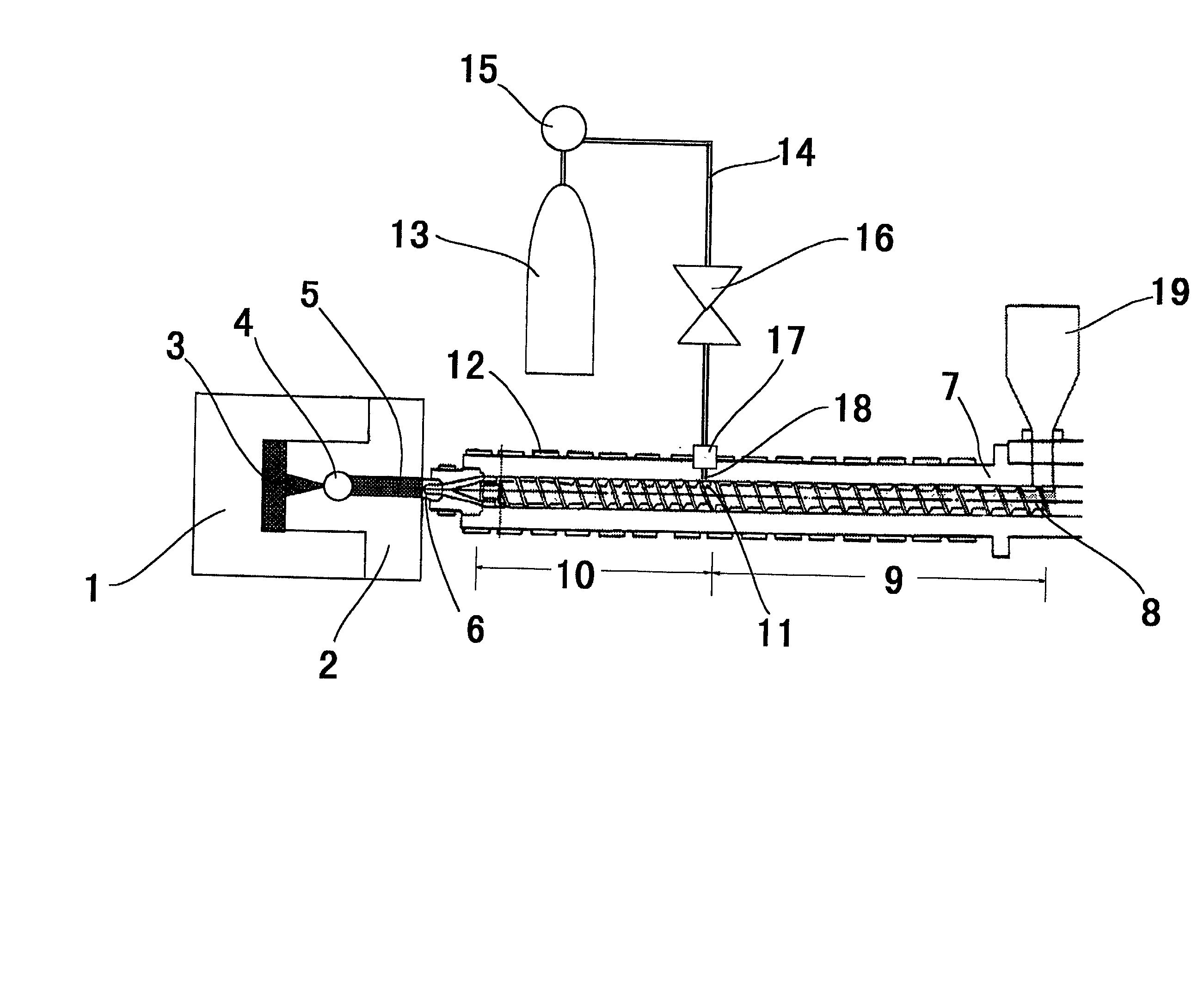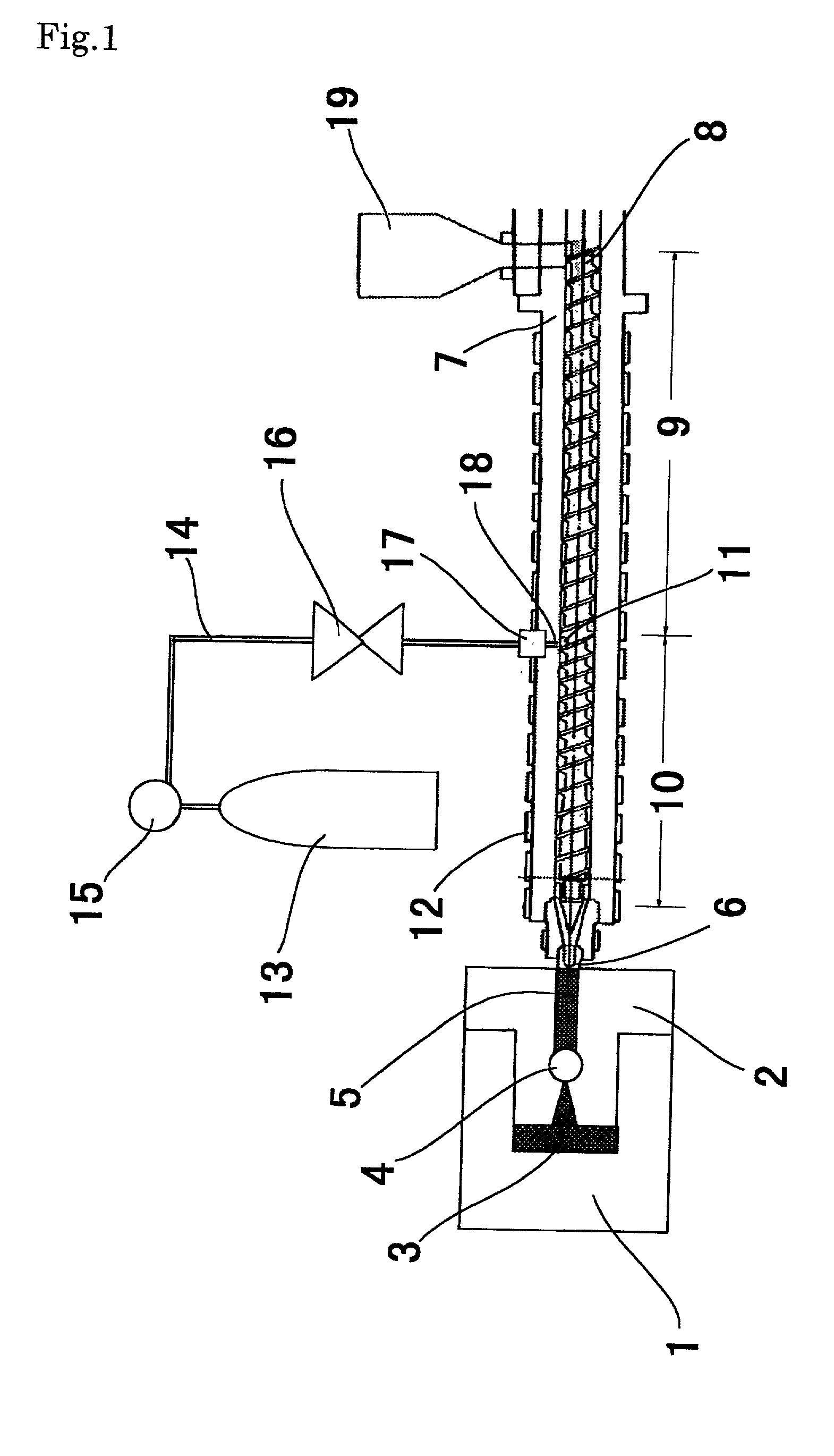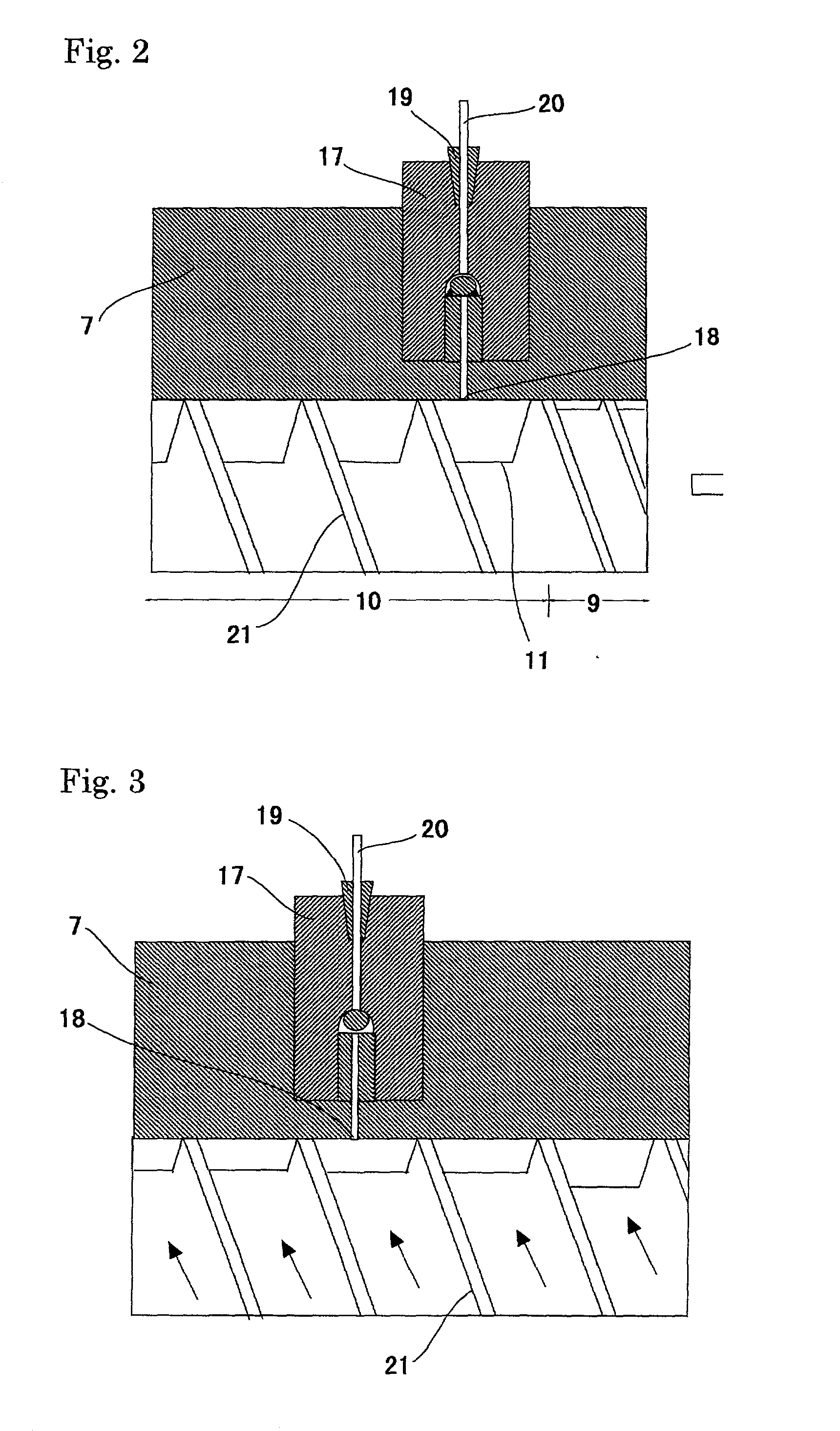Process for injection foaming, and machine and composition therefore
a technology which is applied in the field of injection foaming and composition processing, and can solve the problems of decomposition of part of the foaming agent, uneven foaming, and lower gas generation efficiency
- Summary
- Abstract
- Description
- Claims
- Application Information
AI Technical Summary
Benefits of technology
Problems solved by technology
Method used
Image
Examples
examples
[0119] The following Examples are intended to further illustrate the process of this invention and are not intended t limit the scope of this invention in any manner.
[0120] In the Examples of this invention, measurements were taken by the following methods:
[0121] (1) Addition amount of the physical foaming agent: A bomb of the physical foaming agent is connected to the injection molding machine via a pressure reducting valve, and the physical foaming agent was continuously discharged out of the system at the set temperature of the molding machine cylinder at the time of the molding of the resin and at the rotary speed of the screw at the time of injection without being injected into the mold. The amount of the physical foaming agent consumed at this time was calculated from the amount of decrease in the weight of the physical foaming agent bomb and determined from a calibration curve determining the relationship between the injection pressure and amount of the physical foaming agent...
examples 1 to 3
[0127] A screw which had the L / D ratio of 27, the screw outside diameter of 69.8 mm, the first-stage compression section having the L / D ratio of 14D (the flat area having 7.3 mm of groove depth from the hopper bottom was 9D, and the following area in which the groove depth decreased evenly from 7.3 mm to 3.1 mm is 5D), and the second-stage compression section having the L / D ratio of 13D (the flat area having 11 mm of groove depth from the hopper bottom was 7D, and the area in which the groove depth decreased evenly from 11 mm to 5 mm is 6D) was mounted on IS-450GS-27 (mold clamping force: 450 tons; the straight-hydraulic mold clamping system), available from Toshiba Machine Co., Ltd., which was used as the injection molding machine. The distance between the grooves in the screw was constant. A physical foaming agent injection hole having 2 mm of inside diameter was made in the cylinder at a location corresponding to the 2D area of the second-stage compression section at the time of ...
examples 4 to 6
[0139] Injection foaming was carried out in the same manner as described in Examples 1 to 3 except that as the foaming agent, 0.04 wt % citric acid and 0.06 wt % sodium hydrogencarbonate were added.
[0140] The pressure of the physical foaming agent bomb, injection pressure, addition amount, cavity clearance, thickness of the foam product, expansion ratio, average cell diameter, maximum cell diameter, skin layer thickness, smoothness and status of occurrence of flash or silver streak are shown in Table 2.
[0141] Compared with Examples 1 to 3, the cell diameter was uniform, and microcells were formed. Compared with Examples 1 to 3, the average cell diameter was small, and the appearance was better.
PUM
| Property | Measurement | Unit |
|---|---|---|
| particle diameter | aaaaa | aaaaa |
| average particle diameter | aaaaa | aaaaa |
| thickness | aaaaa | aaaaa |
Abstract
Description
Claims
Application Information
 Login to View More
Login to View More - R&D
- Intellectual Property
- Life Sciences
- Materials
- Tech Scout
- Unparalleled Data Quality
- Higher Quality Content
- 60% Fewer Hallucinations
Browse by: Latest US Patents, China's latest patents, Technical Efficacy Thesaurus, Application Domain, Technology Topic, Popular Technical Reports.
© 2025 PatSnap. All rights reserved.Legal|Privacy policy|Modern Slavery Act Transparency Statement|Sitemap|About US| Contact US: help@patsnap.com



